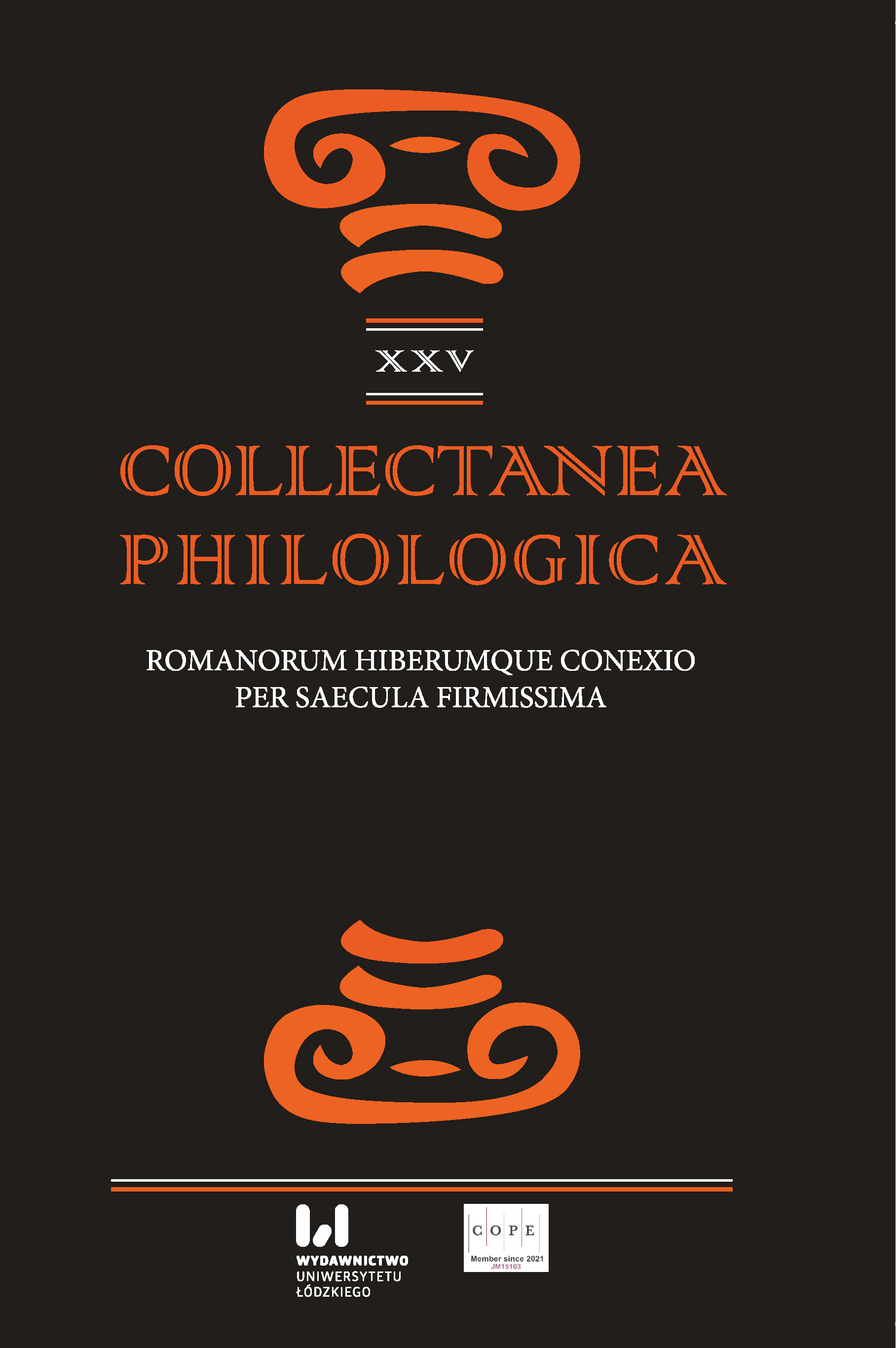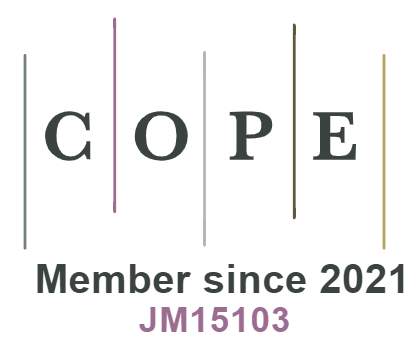Scypion Afrykański Starszy i hiszpańskie kobiety. Mit continentia Scipionis i jego recepcja w malarstwie weneckim w XVIII wieku
DOI:
https://doi.org/10.18778/1733-0319.25.17Słowa kluczowe:
Scypion Afrykański Starszy, narzeczona Allucjusza, Liwiusz, Polibiusz, “Powściągliwość Scypiona”, Sebastian Ricci, Gian Antonio Pellegrini, Giovanni Battista TiepoloAbstrakt
Livy and Polybius note that after the conquest of New Carthage, Scipio Africanus the Elder freed Spanish hostages, among whom was Allucius’ fiancée of extraordinary beauty. Not only did Scipio not accept her as a gift, but he summoned her parents and fiancé from her country, returned her to them for free and gave away as a wedding gift the gold intended for her redemption. The motif of the “continence of Scipio”, which was a political strategy aimed at gaining allies and ensuring their friendship with the Romans, was widely reflected in literature, opera and, above all, painting, starting from the sixteenth century. In the article we present works created in the Venetian artistic environment that have not been analyzed before.
Bibliografia
Ammianus Marcelinus (2000). The History. Vol. II. Trans. J.C. Rolfe. Cambridge (Ma.), London: Harvard University Press.
Google Scholar
Aulu-Gelle (1978). Les Nuits Attiques. T. II: livres V–X. Texte établi et traduit par R. Marache. Paris: Les Belles Lettres.
Google Scholar
Balmaceda, C. (2017). Virtus Romana. Politics and Morality in the Roman Historians. Chapel Hill: University of North Carolina.
Google Scholar
DOI: https://doi.org/10.5149/northcarolina/9781469635125.001.0001
Barcham, W.L. (1996). Tiepolo as a Painter of History and Mythology and as a Decorator. In: K. Christiansen (ed.). Giambattista Tiepolo 1696–1770. New York: The Metropolitan Museum of Art. 105–117.
Google Scholar
Baskins, C.L. (2002). „(In)famous Men. The Continentia of Scipio and Formations of Masculinity in Fifteenth-Century Tuscan Domestic Painting”. Studies in Iconography 23. 109–136.
Google Scholar
Beltramini, L., Rocco, M. (2020). „Livy on Scipio Africanus. The Commander’s Portrait at 26.19.3–9”. The Classical Quarterly. 70. 230–246. https://doi.org/10.1017/S0009838820000348.
Google Scholar
DOI: https://doi.org/10.1017/S0009838820000348
Borean, L. (2016). Paolo Veronese Revisited: Art Collecting and Connoisseurship in Eighteenth-Century Venice. In: A.B. Banta. The Enduring Legacy of Venetian Renaissance Art. New York: Routledge. 89–101.
Google Scholar
DOI: https://doi.org/10.4324/9781315086705-7
Burton, P.J. (2011). Friendship and Empire. Roman Diplomacy and Imperialism in the Middle Republic (353–146 BC). Cambridge: Cambridge University Press.
Google Scholar
DOI: https://doi.org/10.1017/CBO9781139035590
Chacón Bulnes, J.M., Ibero Solana, A. (2003–2005). „Muralla Púnica de Cartagena”. Memorias de patrimonio. Servicio de Patrimonio Histórico de la Región de Murcia 7. 168–177.
Google Scholar
Chaplin, J.D. (2000). Livy’s Exemplary History. Oxford: Oxford University Press.
Google Scholar
Chaplin, J.D. (2010). Scipio the Matchmaker. In: Ch.S. Kraus, J. Marincola, Ch. Pelling (eds.). Ancient Historiography and its Contexts. Studies in Honour of A.J. Woodman. Oxford: Oxford University Press. 60–72.
Google Scholar
DOI: https://doi.org/10.1093/acprof:oso/9780199558681.003.0004
Charles-Picard, G. (1971). Hannibal. Przeł. Z. Stein. Warszawa: Państwowy Instytut Wydawniczy.
Google Scholar
Ciaranfi, A.M. (1966). Domenico Beccafumi. Firenze: Sadea/Sansoni Editori.
Google Scholar
Daniels, J. (1976). L’opera completa di Sebastiano Ricci. Milan: Rizzoli.
Google Scholar
Florus. (2002). OEuvres. T. I. Texte établi et traduit par P. Jal. Paris: Les Belles Lettres.
Google Scholar
Frontinus. (1925). The Stratagems and The Aquaeducts of Rome. With an English translation by Ch.E. Bennett. London: William Heineman; New York: G.P. Putnam’s Sons.
Google Scholar
Frontyn (2016). Podstępy wojenne. Przeł., wstępem i przypisami opatrzył B. Burliga. Wrocław: ISKŚiO UWr.
Google Scholar
Hartog, F. (1988). The Mirror of Herodotus. The Representation of Other in the Writing the History. Trans. J. Lloyd. Berkeley, Los Angeles, London: University of California Press.
Google Scholar
Herbert, K. (1957). „The Identity of Plutarch’s Lost Scipio”. The American Journal of Philology 78. 83–88. https://doi.org/10.2307/291992.
Google Scholar
DOI: https://doi.org/10.2307/291992
Hooff, A.J. van (2002). From Autothanasia to Suicide. Self-killing in Classical Antiquity. London, New York: Routledge.
Google Scholar
DOI: https://doi.org/10.4324/9780203032930
Hoyos, D. (2005). Hannibal’s Dynasty. Power and politics in the western Mediterranean, 247–183 BC. London, New York: Routledge.
Google Scholar
Hoyos, D. (2015). Rome and Carthage in Livy. In: B. Mineo (ed.). A Companion to Livy. Chichester: Wiley Blackwell. 369–381.
Google Scholar
DOI: https://doi.org/10.1002/9781118339015.ch27
Jurewicz, O. (2001). Słownik grecko-polski. T. 2: Λ–Ω. Warszawa: Wydawnictwo Szkolne PWN.
Google Scholar
Kapust, D. (2011). Republicanism, Rhetoric, and Roman Political Thought. Cambridge: Cambridge University Press.
Google Scholar
DOI: https://doi.org/10.1017/CBO9780511976483
Keegan, P. (2021). Livy’s Women. Crisis, Resolution, and the Female in Rome’s Foundation History. London, New York: Routledge.
Google Scholar
DOI: https://doi.org/10.4324/9781315148489
Knox, G. (1985). „Roman and Less Roman Elements in Venetian History Painting, 1650–1750”. RACAR: revue d’art canadienne /Canadian Art Review 12.2. 175–178.
Google Scholar
DOI: https://doi.org/10.7202/1073667ar
Knox, G. (1995). Antonio Pellegrini: 1675–1741. Oxford: Clarendon Press.
Google Scholar
Korpanty, J. (ed.) (2001). Słownik łacińsko-polski. T. 1: A–H. Warszawa: Wydawnictwo Szkolne PWN.
Google Scholar
Korpanty, J. (ed.) (2003). Słownik łacińsko-polski. T. 2. I–Z. Warszawa: Wydawnictwo Szkolne PWN.
Google Scholar
Kunzle, D. (2002). From Criminal to Courtier: The Soldier in Netherlandish Art 1550–1672. Leiden, Boston: Brill.
Google Scholar
DOI: https://doi.org/10.1163/9789004475687
Lancel, S. (2001). Hannibal. Przeł. R. Wiśniewski. Warszawa: Państwowy Instytut Wydawniczy.
Google Scholar
Levene, D.S. (2010). Livy on the Hannibalic War. Oxford: Oxford University Press.
Google Scholar
DOI: https://doi.org/10.1093/acprof:oso/9780198152958.001.0001
Macdonald, E. (2015). Hannibal. A hellenistic life. New Haven, London: Yale University Press.
Google Scholar
Marchesi, S. (2009). „Petrarch’s Philological Epic: Africa”. In: V. Kirkham, A. Maggi, Petrarch: a critical guide to the complete works. Chicago: University of Chicago Press. 113–130.
Google Scholar
Martin, J.M.K. (1942). „Livy and the Romance”. Greece & Rome 11. 124–129.
Google Scholar
DOI: https://doi.org/10.1017/S0017383500007841
Mehl, A. (2011). Roman Historiography. An Introduction to its Basic Aspects and Development. Transl. H.-F. Mueller. Chichester: Wiley-Blackwell.
Google Scholar
Moore, T.J. (1989). Artristry (!) and Ideology: Livy’s Vocabulary of Virtue. Frankfurt am Main: Athenäum Verlag.
Google Scholar
Mueller, H.-F. (2002). Roman Religion in Valerius Maximus. London, New York: Routledge.
Google Scholar
DOI: https://doi.org/10.4324/9780203463260
Östenberg, I. (2009). Staging the World. Spoils, Captives, and Representations in the Roman Triumphal Procession. Oxford: Oxford University Press.
Google Scholar
DOI: https://doi.org/10.1093/acprof:oso/9780199215973.003.0002
Peacock, J. (2000). „Looking at Van Dyck’s Scipio in its Context”. Art History 23. 262–289. https://doi.org/10.1111/1467-8365.00208
Google Scholar
DOI: https://doi.org/10.1111/1467-8365.00208
Pedrocco, F. (2002). Tiepolo: the complete paintings. New York, Mailand: Rizzoli.
Google Scholar
Peter, H. (ed.) (1914). Historicorum Romanorum Reliquiae. Vol. I. Lipsiae: in aedibus Teubneri.
Google Scholar
Piai, M. (1974–1975). „Il Veronese revival nella pittura veneziana del Settecento”. Atti dell’Instituto Veneto di Scienze, Lettere e Arti 133. 295–312.
Google Scholar
Polyaenus. (1887). Strategemata. Ed. J. Woelfflin, I. Melber. Lipsiae: in aedibus Teubneri.
Google Scholar
Polybius. (1893). Historiae. Ed. Th. Büttner-Wobst, L. Dindorf. Leipzig: Teubner.
Google Scholar
Pseudo-Aurelius, Victor (1911). De viris illustribus urbis Romae. Ed. F. Pichlmayr. Leipzig: Teubner.
Google Scholar
Richardson, J.H. (2018). „P. Cornelius Scipio and the capture of New Carthage: the tide, the wind and other fantasies”. The Classical Quarterly 68.2. 458–474. https://doi:10.1017/S0009838818000368
Google Scholar
DOI: https://doi.org/10.1017/S0009838818000368
Rizzi, A. (1989). Sebastiano Ricci. Villa Manin di Passariano (Udine) 25 giugno–19 novembre 1989. Milano: Electa.
Google Scholar
Romilly, J. de. (1988). „Le conquérant et la belle captive”. Bulletin de l’Association Guillaume Budé 1. 3–15. https://doi:10.3406/bude.1988.1346
Google Scholar
DOI: https://doi.org/10.3406/bude.1988.1346
Scarpa, A. (2006). Sebastiano Ricci. Milan.
Google Scholar
Schiavo, R. (1989). Giovanni Battista Tiepolo alla Villa Cordellina di Montechio Maggiore. Vicenza: Publigrafica Editrice.
Google Scholar
Scullard, H.H. (1929). Scipio Africanus in the Second Punic War. Cambridge: The University Press.
Google Scholar
Silius Italicus (2003). La guerre Punique. T. IV: livres XIV et XV. Texte établi et traduit par M. Martin. Livres XVI et XVII. Texte établi et traduit par G. Devallet. Paris: Les Belles Lettres.
Google Scholar
Spaltenstein, F. (1990). Commentaire des Punica de Silius Italicus (livres 9 à 17). Genève: Libraire Droz S.A.
Google Scholar
Titus Livus (1884). Ab urbe condita libri. Ed. G. Weissenborn, M. Mueller. Pars II. Libri XXI–XXX. Leipzig: Teubner.
Google Scholar
Tytus Liwiusz (1974). Dzieje Rzymu od założenia miasta. Ks. XXI–XXVII. Przeł. i oprac. M. Bożek. Wrocław, Warszawa, Kraków, Gdańsk: Zakład Narodowy im. Ossolińskich.
Google Scholar
Tytus Liwiusz (1976). Dzieje Rzymu od założenia miasta. Ks. XXVIII–XXIV. przeł. i oprac. M. Bożek. Wrocław, Warszawa, Kraków, Gdańsk: Zakład Narodowy im. Ossolińskich.
Google Scholar
Tzeutschler, L.A. (1982). The Cleveland Museum of Art Catalogue of Paintings, Part 3: European Paintings of the 16th, 17th, and 18th Centuries. Cleveland, OH: The Cleveland Museum of Art. 385–387.
Google Scholar
Walbank, F.W. (1967a). A Historical Commentary on Polybius. Vol. II. Oxford: Clarendon Press.
Google Scholar
Walbank, F.W. (1967b). „The Scipionic legend”. Proceedings of the Cambridge Philological Society. 54–69.
Google Scholar
DOI: https://doi.org/10.1017/S1750270500030104
Walde, Ch. (2010). Die Rezeption der antiken Literatur: Kulturhistorisches Werklexikon. Stuttgart: J.B. Metzler.
Google Scholar
DOI: https://doi.org/10.1007/978-3-476-00084-2
Waleriusz Maksymus. (2019). Czyny i powiedzenia godne pamięci w dziewięciu księgach. Przekład, wstęp i komentarz I. Lewandowski. Poznań: Wydawnictwo Naukowe UAM.
Google Scholar
Zecchini, G. (2014). Scipione in Spagna: un approccio critico alla tradizione Polibiano-Liviana. In: G. Urso (ed.). Hispania terris omnibus felicior. Premesse ed esiti di un processo di integrazione. Pisa: Fondazione Niccolò Canussio. 87–103.
Google Scholar
Ziółkowski, A. (1988). Urbs direpta. Los miasta zdobytego przez Rzymian w okresie wielkich podbojów. In: Świat antyczny. Stosunki społeczne, ideologia i polityka, religia. Studia ofiarowane Izie Bieżuńskiej-Małowist w pięćdziesięciolecie pracy naukowej przez Jej uczniów. Warszawa: PWN. 87–116.
Google Scholar
Opublikowane
Jak cytować
Numer
Dział
Licencja

Utwór dostępny jest na licencji Creative Commons Uznanie autorstwa – Użycie niekomercyjne – Bez utworów zależnych 4.0 Międzynarodowe.












